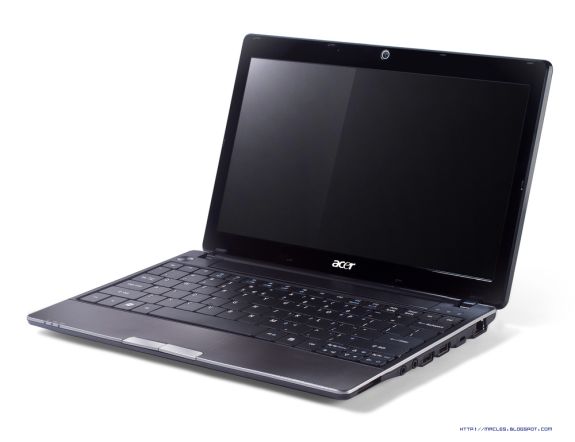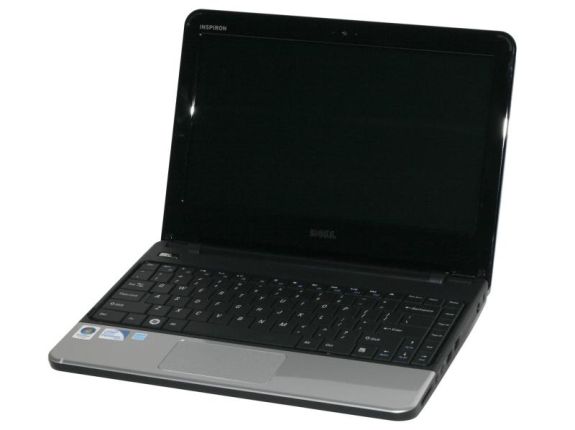Laptop Buyer's Guide: 14-inch and Smaller
by Vivek Gowri on July 19, 2010 12:01 AM ESTBudget Portable: Acer TimelineX line
The Acer Timeline series was the line of notebooks that really kickstarted the CULV trend in the portable market. Dual core notebooks that were quick and could handle 1080p video, along with 8 hour batteries and $600-800 pricetags, really set the stage for the CULV explosion. It didn’t hurt that the Timelines were very thin, very light, and looked pretty nice to boot. The TimelineX is the updated version of the Timeline series, with Arrandale and Arrandale ULV processors.
The pricepoints remain about the same, as are the laptop sizes - you can choose between 11.6”, 13.3”, 14.1”, and 15.6” form factors (all with the same 1366x768 WXGA resolution, interestingly enough), and on all but the smallest 1830T, you get regular Core i3/i5/i7 processors while still managing the 8 hours of battery life. The 11.6”er makes do with the 2nd generation CULV platform, presumably because the standard voltage chips didn’t pass the required thermal validation. The TimelineX notebooks only come with Core i3 and i5 processors, in line with their budget nature. With the most expensive TimelineX coming in at $829, it’s hard to argue.
Now, with the performance being in line with more expensive portables, the corners have to be cut somewhere to hit the low pricepoints. I can tell you from personal experience with the first generation Timeline series that the first thing to go is build quality, and next is display quality. The build quality is fairly mediocre, with completely plastic casing, flex-laden keyboards, and a general lack of the solid feeling you get from more expensive systems. The screens were subpar as well, though the larger models were better than the 11.6” models, which had grainy screens to go with the low contrast ratio and washed out blacks. These are hopefully improved on the newer and more expensive models, but probably not by much. There is a reason these are some of the least expensive ultraportables on the market, after all.
But the whole goal of a budget system is to stuff as much performance and as many features as possible into a computer with as low a pricetag as possible, and in that, the TimelineX series definitely succeeds.
Honorable Mention: Dell Inspiron 11z
This one has to get a mention: the Dell 11z is selling for $449 with a dual core Pentium SU4100, 2GB memory, 250GB hard drive, and a 56 Wh 6 cell battery. This basically represents the same value theory I presented with the Acer 1410 when I reviewed it, except even more so, since the 11z has the dual core processor and a larger battery, while still being within striking distance of the netbook price points.
With that said, there are a couple of things that need to be pointed out before handing out a real recommendation. One is that the battery sticks out the bottom - a lot of people apparently don’t mind this, but it’s one thing that drives me crazy about extended batteries. The batteries that stick out the back are fine, though. The other thing is the buttonless touchpad. Jarred absolutely abhors it, as do many other 11z owners that I know. I personally don’t find it unbearable, though it’s definitely not a very good trackpad. At $449, I know that I can deal with it, but I’d definitely advise trying it out first and making sure it’s okay before you buy.












79 Comments
View All Comments
neothe0ne - Monday, July 19, 2010 - link
I feel like you did the Envy 14 an injustice by not even mentioning switchable graphics. And I don't believe the opening page with "NVIDIA dominates the portable market" - all Dells, most Sonys, all HPs, and then some are using ATI cards now.ExodusC - Monday, July 19, 2010 - link
Also, I'd like to note that from the users that have gotten their Envy 14s already, they have stated that it does not get uncomfortably hot (like the Envy 15 was known to). It apparently stays relatively cool, even while gaming (not sure about something super intensive like 3DMark or Furmark).KZ0 - Monday, July 19, 2010 - link
In very many of the reviews I've read here, it has been commented on how the screen sucks, as usual. When there finally is an affordable notebook with a great 1600x900 14" screen, it's not even commented on? Why? I know some models (non US-factory, the Amazon model, etc) have a 1366x768 display, but the HD+ screen is even included in the base 1099 USD factory price!When there's no review model available, at least use what info there is (user reviews) instead of speculation! And the i7 quad option isn't even a reasonable upgrade for most people, killing battery life (not having an integrated GPU to use the switchable graphics, and higher power consumption), making more heat / noise, and not providing much of a performance increase for most people.
A review or analysis on Anandtech is generally very good, and I've been following the site for quite some time now (though not posting), but this disappoints me.
JPForums - Monday, July 19, 2010 - link
Don't be disappointed. This is Anandtech. They don't claim to be perfect, but they do accept feedback. If you bring up legitimate concerns, they are pretty good about fixing it for future articles. You may even get an update to a current article.That said I'd like to voice my opinion that 1600x900 or better resolution screens in a 14" or smaller notebook is a very compelling feature. Such a screen may be worth the trade off in battery life and/or cost as there are cases where the increased desktop real estate results in a significant increase in productivity. This productivity boost is not easy to measure, but at least warrants a word.
TareX - Friday, March 4, 2011 - link
My Envy 14 has a Radiance 900p screen that simply blows away every other 14" Laptop screen in the market.It is NOT plagued by the older generation Envy laptops' issues with heat.
I am quite perplexed by this Anadtech article. If they didn't review it, they could have at least read the impressions of other sites whose editors actually used the new Envy 14.
VivekGowri - Monday, July 19, 2010 - link
By "the portable market" I was meaning laptops smaller than 14" (which this buyer's guide was focusing on) as distinct from the more mainstream and desktop replacement markets.How many 12" and 13" non-AMD laptops can you name with ATI graphics? Off the top of my head, the Sony S series has an optional ATI HD 5470 card, and the Lenovo U450p that had an HD 4330 switched to Nvidia when it got bumped to Arrandale. Other than that, a lot of the really portable notebooks tend to use Nvidia GPUs. Cases in point: the entire Asus portable lineup, the M11x, the VAIO Z, the Lenovo U460, etc etc etc. So I think it was a fair term.
Once you start getting to 14" and larger notebooks, you start seeing a lot of ATI GPUs, yes, but not in notebooks smaller than that.
ExodusC - Monday, July 19, 2010 - link
I should have stated I don't necessarily agree with neothe0ne. I replied to his comment as it was related to the Envy 14. I have to agree with you, actually, that NVIDIA has dominance with their mobile parts. From what I understand, AMD is gaining ground, in that market segment though, are they not?I mainly wanted to question the Envy 14 getting hot-- from everything I've read, it really doesn't get that hot (maybe in a lap, if the vents are covered? I figure anyone using the dGPU will be gaming, and therefore plugged into an outlet and on a desk).
Most importantly, Vivek, is AnandTech planning a review? Last I heard it was hard to get a review unit, but I'm really curious if AT has heard anything from HP about it. The Envy 14 seems to be gaining a lot of popularity as a MBP-alternative, as many people have an anti-Apple stigma.
ExodusC - Monday, July 19, 2010 - link
Oh, and one last thing, the Envy 14's battery may be sealed in, but it's easily removable by flipping a simple switch. I know it's a minor thing, but when I read the article, it seemed to suggest the battery was non-removable, like the MBP.:)
ExodusC - Monday, July 19, 2010 - link
Well, after a second look some users report it getting hot, others say it doesn't get hot. I guess it depends what kind of load it's under.Visual - Monday, July 19, 2010 - link
The HP tm2 uses ATI 4550, and it being a tablet convertible has better portability than any of the ones included in this "guide", while not being far in performance too. I'm actually surprised it was not mentioned.